The 1889 Silver Dollar value varies significantly based on mint mark and condition. The 1889-O ranges from $48-$225 for circulated coins and $326-$15,000+ for uncirculated specimens. Special Proof Like (PL) and Deep Proof Like (DPL) surfaces command premium prices, with DPL coins reaching up to $85,000. The 1889-CC is the rarest and most valuable, while 1889 (no mint mark) and 1889-S versions have different valuations. Condition grading is crucial—higher MS grades dramatically increase worth. Error coins with die varieties, doubled dies, or striking anomalies add significant value for collectors seeking rare 1889 Morgan Dollar variations.
The 1889 Morgan silver dollar represents one of the most intriguing years in the series, with dramatic value differences between mint locations. While a Philadelphia-minted example might fetch around fifty dollars in average condition, an 1889-CC from Carson City can command over twenty thousand dollars in top grades. Understanding these variations, along with valuable errors and special designations, can mean the difference between selling a coin for melt value or discovering a small fortune in your collection.
What Makes the 1889 Morgan Dollar Special
The 1889 production year saw significant disparities in mintage numbers across the four operating mints. Philadelphia struck 21,726,000 pieces, making it readily available to collectors. New Orleans produced 11,875,000 coins, while San Francisco contributed 700,000 pieces. The Carson City Mint manufactured just 350,000 examples, creating the scarcity that drives today’s premium prices.
These coins contain 0.77344 troy ounces of pure silver, weighing 26.73 grams total with a 90 percent silver composition. The remaining 10 percent consists of copper, providing durability for circulation. At current silver prices around twenty-four dollars per ounce, the melt value alone sits near nineteen dollars, establishing the absolute minimum worth for any 1889 Morgan dollar.
The designer, George T. Morgan, created this iconic design featuring Lady Liberty on the obverse and a heraldic eagle on the reverse. His initial “M” appears at the base of Liberty’s neck on the obverse. Mint marks, when present, appear on the reverse below the wreath ribbon.
1889 No Mint Mark Philadelphia Values
Philadelphia coins from 1889 represent the most common variety, yet uncirculated examples still command substantial premiums. The typical price progression follows this pattern:
Circulated Grades:
- Good (G-4): $32
- Very Good (VG-8): $34
- Fine (F-12): $36
- Very Fine (VF-20): $38
- Extremely Fine (EF-40): $42
- About Uncirculated (AU-50): $48
- About Uncirculated (AU-58): $65
Mint State Grades:
- MS-60: $85
- MS-63: $110
- MS-64: $165
- MS-65: $425
- MS-66: $1,200
- MS-67: $18,500
The dramatic jump from MS-66 to MS-67 reflects the extreme rarity of gems from this high-mintage year. According to Professional Coin Grading Service population reports, fewer than 120 examples have achieved the MS-67 grade, with only three graded MS-68. Heritage Auctions sold an MS-67+ example in January 2024 for $19,200, demonstrating strong demand for premium quality.
Proof versions were struck in limited quantities, with approximately 811 examples produced. A Proof-65 specimen typically sells for $4,500 to $6,000, while Proof-67 examples can exceed $25,000. Deep Cameo proofs, showing strong contrast between frosted devices and mirror fields, command even higher premiums.
1889-O New Orleans Dollar Pricing
The New Orleans Mint produced substantial quantities in 1889, but most examples entered circulation immediately. Finding high-grade uncirculated specimens presents significant challenges due to the humid storage conditions at the New Orleans facility, which caused toning and bag marks on stored coins.
Standard Pricing Structure:
- Good to Fine (G-4 to F-12): $32-$38
- Very Fine to Extremely Fine (VF-20 to EF-40): $40-$46
- About Uncirculated (AU-50 to AU-58): $52-$75
- Mint State (MS-60 to MS-63): $95-$135
- MS-64: $225
- MS-65: $850
- MS-66: $4,200
- MS-67: $52,000
The special designations Proof Like and Deep Proof Like dramatically increase values. These surface qualities result from striking coins with specially prepared dies, creating mirror-like fields similar to proof coins. An 1889-O graded MS-65 PL might sell for $2,800, while an MS-65 DPL can reach $8,500. At the MS-66 DPL level, prices escalate to $45,000 or higher, with MS-67 DPL specimens potentially exceeding $85,000 based on NGC price guide data.
Stack’s Bowers sold an MS-66 DPL example in August 2023 for $54,000, confirming the substantial premiums these special designations command. The Deep Proof Like surface remains scarce because only coins struck early in a die’s life achieved the deep mirror finish before die erosion degraded the effect.
1889-S San Francisco Mint Mark Values
The San Francisco production of 700,000 pieces represents moderate scarcity in the 1889 date. Many examples survived in uncirculated condition due to better storage practices on the West Coast, making this variety more available in mint state than the New Orleans counterpart.
Price Guide by Grade:
| Grade | Value |
|---|---|
| G-4 | $34 |
| VG-8 | $36 |
| F-12 | $38 |
| VF-20 | $40 |
| EF-40 | $45 |
| AU-50 | $55 |
| AU-58 | $80 |
| MS-60 | $125 |
| MS-63 | $185 |
| MS-64 | $375 |
| MS-65 | $1,350 |
| MS-66 | $6,500 |
| MS-67 | $75,000 |
The 1889-S typically trades at modest premiums over the Philadelphia issue in circulated grades but shows stronger pricing in uncirculated conditions. The MS-65 level represents the grade where serious collectors compete, driving prices above four times the Philadelphia equivalent.
Proof Like examples exist but remain considerably scarcer than the New Orleans Proof Like pieces. An MS-64 PL might sell for $1,100, while MS-65 PL examples can reach $3,800. The finest known 1889-S coins grade MS-67, with PCGS reporting just 11 examples at that level and none higher. Great Collections sold an MS-67 specimen in March 2024 for $72,000.
1889-CC Carson City Premium Prices
The Carson City Mint produced merely 350,000 Morgan dollars in 1889, making this the key date for the year and one of the more valuable regular-issue Carson City coins. Heavy melting under the Pittman Act of 1918 destroyed countless examples, with surviving population estimates suggesting fewer than 5 percent of the original mintage still exists.
Carson City Value Spectrum:
- Good (G-4): $1,200
- Very Good (VG-8): $1,400
- Fine (F-12): $1,650
- Very Fine (VF-20): $1,900
- Extremely Fine (EF-40): $2,400
- About Uncirculated (AU-50): $3,200
- About Uncirculated (AU-58): $4,800
- MS-60: $6,500
- MS-63: $11,500
- MS-64: $18,000
- MS-65: $52,000
- MS-66: $175,000
- MS-67: $650,000
Even heavily worn examples command four-figure prices, making the 1889-CC a serious investment regardless of condition. The typical collector seeking a representative Carson City coin will spend between two thousand and five thousand dollars for an Extremely Fine to About Uncirculated example showing honest wear from circulation.
Heritage Auctions achieved $660,000 for an MS-67 specimen in April 2022, setting the record for this date. Only nine examples have received the MS-67 grade from PCGS, with none graded MS-68 or higher. The MS-66 level represents the realistic ceiling for most advanced collectors, though even this grade requires substantial investment exceeding $150,000 at auction.
Proof Like Carson City dollars from 1889 rarely appear in the market. When they do surface, premiums of 50 to 100 percent over standard mint state examples apply. An MS-64 PL sold through Stack’s Bowers in January 2023 for $32,400, demonstrating the strong demand for these special strikes.
Valuable Errors and Varieties Worth Finding
Several die varieties and errors from 1889 create additional collecting opportunities beyond the standard issues. These varieties result from die damage, doubling, or other minting anomalies that occurred during the striking process.
Hot 50 Variety (1889-O VAM-4): This variety shows a doubled ear on Liberty’s portrait, visible with magnification. The term “Hot 50” comes from a list of 50 popular VAM varieties that command premiums. An MS-63 example might sell for $225 compared to $135 for a common 1889-O in the same grade, representing a 65 percent premium.
1889-O Oval O (VAM-12): The mint mark appears smaller and more oval-shaped than typical examples. This subtle variety appeals to specialists, adding $50 to $100 to the value in mint state grades.
1889 Doubled Date: Some Philadelphia examples show clear doubling on the date digits, particularly visible in the “88” portion. Depending on the severity and eye appeal, premiums of $100 to $500 apply in uncirculated grades.
Die Breaks and Cuds: Advanced die states showing dramatic breaks or cuds (raised lumps of metal caused by die chips) attract error collectors. A significant cud on the reverse might add $200 to $800 depending on size and location.
Off-Center Strikes: Morgan dollars struck significantly off-center remain extremely rare because quality control at the mints prevented most from leaving the facility. A 5 to 10 percent off-center strike might bring $2,500 to $5,000, while a 25 percent off-center example could exceed $10,000.
Wrong Planchet Errors: Coins struck on planchets intended for other denominations create dramatic errors. An 1889 Morgan struck on a trade dollar planchet sold for $18,400 in a Heritage auction. These major mint errors appear once every few years at major auctions.
Clashed Dies: When upper and lower dies strike each other without a planchet between them, they transfer design elements from one die to the other. Subsequent coins show ghost images, such as portions of the eagle appearing on Liberty’s face. Minor clashed die examples add $25 to $50, while dramatic examples can add several hundred dollars.
The VAM (Van Allen-Mallis) attribution system catalogs over 40 different die varieties for the 1889 date across all mint marks. Serious variety collectors pursue specific VAMs, creating a specialized market segment. Complete reference books detail each variety with photographs and pricing information.
Authentication and Grading Considerations
Counterfeit 1889 Morgan dollars exist, particularly for the valuable Carson City mint mark. Chinese-made fakes have flooded the market over the past decade, often sold through online marketplaces at prices too good to be true. These counterfeits typically show incorrect weight (either too heavy or too light), wrong metal composition detectable with a magnet or specific gravity test, and mushy design details lacking the sharpness of genuine examples.
Professional grading through services like Professional Coin Grading Service, Numismatic Guaranty Company, or ANACS provides authentication and grade verification. The cost ranges from thirty to seventy-five dollars per coin depending on service level and turnaround time. For any 1889-CC or high-grade example potentially worth over five hundred dollars, professional grading becomes financially prudent.
The grading process evaluates strike quality, surface preservation, luster, and eye appeal. Morgan dollars present specific grading challenges due to their large, flat surfaces that show contact marks readily. The cheek of Liberty and the eagle’s breast on the reverse serve as prime focal points where marks significantly impact grade.
Cleaning dramatically reduces value, often by 50 percent or more. Professionally graded coins receive “details” grades when problems like cleaning, environmental damage, or repairs exist. A details-graded AU-58 1889-CC might sell for $1,800, while a problem-free example brings $4,800—a substantial difference.
Toning affects value differently depending on collector preferences. Natural, attractive toning in blues, greens, and golds often adds premiums of 10 to 30 percent. Unattractive brown or black toning can reduce values. Artificially induced toning through chemical treatments receives details grades and significant value reductions.
Market Trends and Investment Potential
The 1889 Morgan dollar market has shown steady appreciation over the past two decades, with Carson City examples leading the way. Comparing prices from 2005 to 2025 reveals substantial gains across all mint marks and grades. An MS-65 1889-CC that sold for $22,000 in 2005 now trades at $52,000, representing a 136 percent increase or approximately 4.4 percent annual growth.
Silver bullion prices influence the floor value but have minimal impact on premium coins. When silver spiked to forty-nine dollars per ounce in 2011, common circulated Morgan dollars briefly sold above forty dollars. During the subsequent decline to fifteen dollars per ounce by 2015, these same common coins dropped to twenty-five dollars. The 1889-CC, however, maintained stable pricing throughout these fluctuations, demonstrating how numismatic value insulates rare coins from commodity price swings.
Registry set collecting through PCGS and NGC drives demand for high-grade examples. Competitive collectors pursuing top-ranked sets compete aggressively for MS-66 and MS-67 coins, supporting premium prices. When an MS-67 example appears at auction, determined collectors often push bidding beyond pre-sale estimates.
Economic uncertainty and inflation concerns periodically boost rare coin demand as investors seek tangible assets. The COVID-19 pandemic period from 2020 to 2022 saw strong price increases across the Morgan dollar series, including 1889 dates. This pattern has repeated during previous economic disruptions, suggesting rare coins provide some inflation protection.
The greatest investment potential exists in properly graded, problem-free examples at the MS-64 to MS-65 level for common mint marks, and AU-58 to MS-63 for the Carson City issue. These grades balance affordability with quality, attracting the broadest collector base. Ultra-grade specimens above MS-66 serve as trophy pieces for wealthy collectors but can prove difficult to sell quickly due to limited buyer pools.
Building Your 1889 Morgan Dollar Collection
Starting a focused collection of 1889 Morgan dollars provides an achievable goal with clear parameters. The basic four-coin set includes one example from each mint mark: Philadelphia, New Orleans, San Francisco, and Carson City. Budget planning varies dramatically based on grade goals.
A circulated set in Very Fine to Extremely Fine condition requires approximately $4,000 to $5,000, with the Carson City consuming about 50 percent of the budget at $2,000 to $2,500. The remaining three mint marks total $2,000 to $2,500 combined. This approach provides attractive, problem-free coins showing moderate wear that still display all design details.
An uncirculated set in MS-63 to MS-64 grades requires $35,000 to $50,000, again with the Carson City dominating the budget at $15,000 to $20,000. This level represents serious collecting, producing a set worthy of competitive registry inclusion.
Advanced collectors pursue variety sets, acquiring multiple examples from each mint to represent different die marriages and varieties. A complete VAM set for 1889 across all mint marks would require 40-plus coins and several years of dedicated searching through dealer inventories and auctions.
Purchasing strategies vary by collector sophistication. Beginning collectors should stick with professionally graded coins from major services, accepting the premium for guaranteed authenticity and grade accuracy. Experienced collectors comfortable with self-grading can pursue raw coins at shows and from dealers, potentially finding undergraded examples at favorable prices.
Auction houses like Heritage, Stack’s Bowers, and Great Collections provide access to quality examples with detailed photographs and grade guarantees. Online marketplaces like eBay present more risk but offer occasional bargains for knowledgeable buyers. Local coin shops allow hands-on examination before purchase, valuable for learning grading skills and detecting problems.
Storage and preservation directly impact long-term value retention. Professional holders from grading services provide excellent protection, but collectors breaking out coins for albums should use non-PVC holders and handle coins only by the edges. Stable temperature and humidity prevent environmental damage and unwanted toning.
Where to Sell Your 1889 Morgan Dollar
When ready to liquidate, several options exist with different advantages. Major auction houses achieve the highest prices for rare, high-grade coins like MS-66 Carson City examples but charge seller fees ranging from 10 to 20 percent. Consignment minimums typically start at $1,000 to $2,500, making auctions unsuitable for common, lower-value coins.
Online auction platforms like eBay and GreatCollections reach broad audiences but require effort creating listings, photographing coins, and managing transactions. GreatCollections provides a middle ground, handling photography and listing while charging 10 percent seller fees with no minimum. This service works well for coins valued between $200 and $5,000.
Local coin dealers offer immediate payment but typically pay 60 to 80 percent of retail value on common dates, and 75 to 90 percent on rare items. The convenience and immediate payment make this option attractive when needing quick liquidity. Building relationships with knowledgeable dealers often results in better offers as they understand your collection quality.
Online dealer buy lists provide price transparency, with major dealers like APMEX and JM Bullion posting current buy prices. These typically fall between auction realization and local dealer offers, representing fair middle-market values.
Timing sales strategically can improve returns. Tax refund season in March and April traditionally sees increased buying activity. Year-end in November and December also shows strength as collectors deploy remaining annual budgets. Avoid selling during summer doldrums in July and August when market activity slows.
Professional grading before sale makes sense for any coin potentially worth over $500. The $30 to $75 grading fee often returns multiples in increased sale price. A raw 1889-CC in About Uncirculated condition might receive offers around $2,500, while the same coin graded AU-58 by PCGS could sell for $4,500 to $5,000—a substantial net gain even after grading costs.
Documentation enhances value, particularly for variety attributions and error coins. Photographing the diagnostic features and including VAM attribution information with the sale listing attracts specialist collectors willing to pay premiums. An unattributed 1889-O might sell for generic pricing, while the same coin correctly identified as a Hot 50 variety commands the appropriate premium.
You may be interested:
- 1859 Indian Head Penny Coin Value Complete Errors List And No Mint Mark Worth Guide For Collectors
- 1911 V Nickel Coin Value Guide Complete Errors List And No Mint Mark Worth Today
- 1902 Dime Coin Value Complete Errors List With O S And No Mint Mark Worth Guide
- 1788 Quarter Coin Value Complete Guide Errors List And D S P Mint Mark Worth Revealed
- 1776 To 1976 Bicentennial Half Dollar Coin Value Complete Errors List And What Your D S And No Mint Mark Coins Are Actually Worth
- 1990 Penny Coin Value Errors List How D S And No Mint Mark Pennies Are Worth Thousands Of Dollars

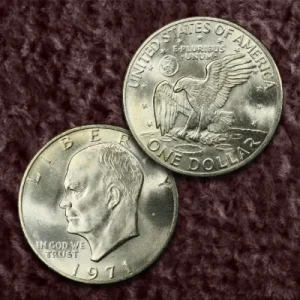
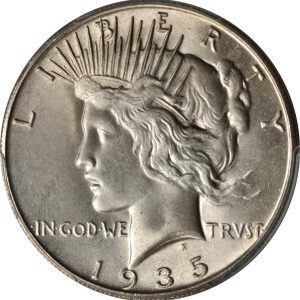
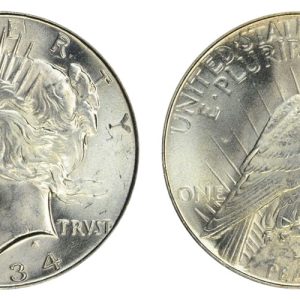
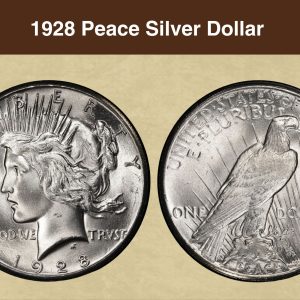
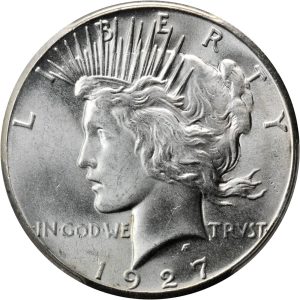
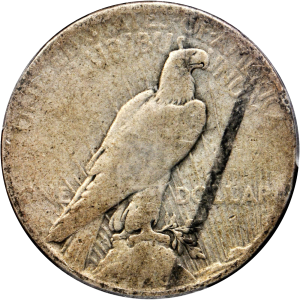
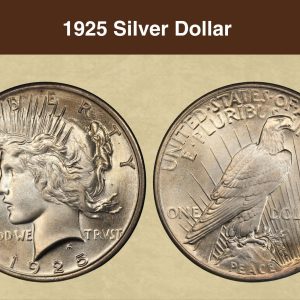
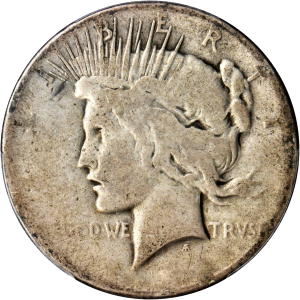
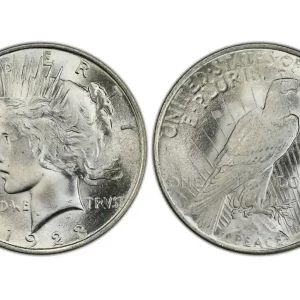
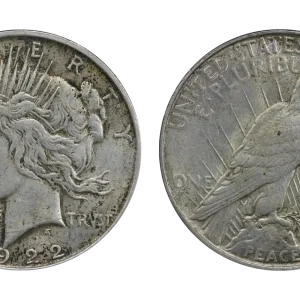
How much is a 1889 O Morgan silver dollar worth today?
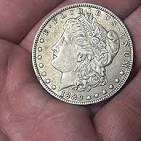 The value of an 1889-O silver dollar today varies significantly based on its condition, ranging from about `$48 to $225 for circulated coins and $326 to over $15,000 for uncirculated coins`.Coins in higher grades, especially those with special features like Proof Like (PL) or Deep Proof Like (DPL) surfaces, can be worth much more, with DPL co…
Why is 1889 CC Morgan Silver Dollar rare?
The 1889-CC Morgan silver dollar is rare due to a very low survival rate, even though its mintage was 350,000, as most circulated and were later melted. The limited production and historical significance of the Carson City Mint also contribute to its value, making it a scarce and highly sought-after coin.
How to tell if 1889 silver dollar is CC?
To tell if an 1889 silver dollar is a “CC” (Carson City) coin, look for a small “CC” mint mark on the reverse side of the coin, below the eagle’s wreath. The “CC” mintmark indicates it was minted in Carson City, Nevada, and collectors should also check for signs of counterfeiting, such as weak details or an unnatural discoloration around the mintmark.
Where do you find the mint mark on a 1889 silver dollar?
To find the mint mark: Flip the coin over to the reverse side. Look in the area below the eagle and the wreath. What to look for: “CC”: Carson City, Nevada “O”: New Orleans, Louisiana “S”: San Francisco, California No mint mark: If there is no mark at all, the coin was struck at the Philadelphia Mint. “CC”: Carson City, Nevada “O”: New Orleans, Louisiana “S”: San Francisco, California